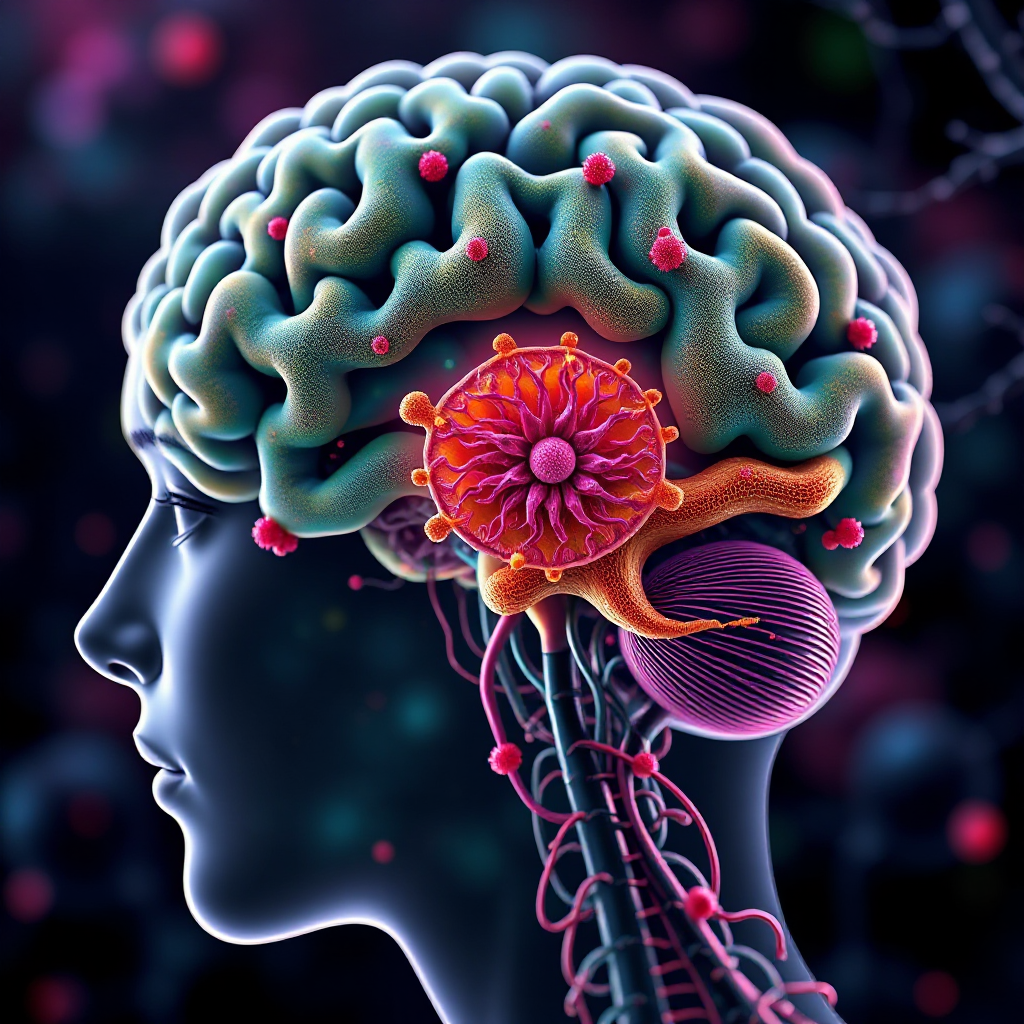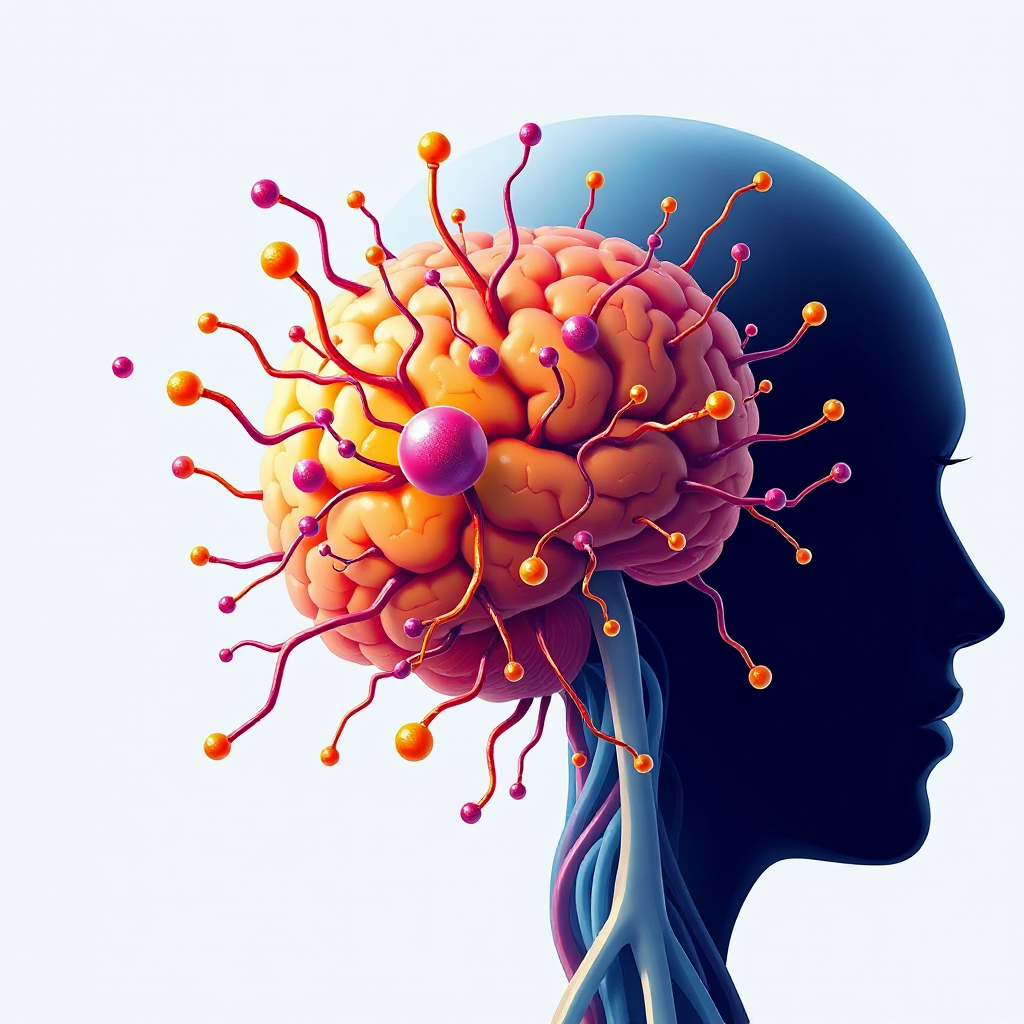What is Primary Central Nervous System Lymphoma

Primary central nervous system lymphoma is a rare and aggressive cancer that affects the brain, spinal cord, cerebrospinal fluid, or eyes. It belongs to a group of cancers called non-Hodgkin lymphomas. This condition demands your attention because it progresses quickly and can lead to severe complications. Early detection plays a critical role in improving outcomes. However, diagnosing it accurately remains a challenge. High relapse rates and low long-term survival rates further complicate treatment. Researchers continue to explore new therapies through clinical trials, aiming to improve survival and quality of life for patients like you.
Key Takeaways
Look for early signs of PCNSL like mood changes, memory trouble, or vision issues. Finding it early can make treatment work better.
Doctors use tests like MRI scans and biopsies to check for PCNSL. Knowing how this works can help you get ready for doctor visits.
Chemotherapy, especially high-dose methotrexate, is the main way to treat PCNSL. Learning about treatments helps you talk with your doctor.
Care during treatment is very important. It helps with side effects and makes life better. Ask for help if you feel upset or have physical problems.
Keep learning about your health and visit your doctor often after treatment. This helps find any return of the disease early and manage long-term problems.
Symptoms of Primary Central Nervous System Lymphoma

Understanding the symptoms of primary central nervous system lymphoma can help you recognize potential warning signs early. This rare cancer often presents with a range of neurological, vision-related, and general symptoms.
Neurological Symptoms
Neurological symptoms are the most common indicators of primary central nervous system lymphoma. You might notice changes in your personality, mood, or mental status. Memory problems, especially with short-term recall, can also occur. Many patients experience difficulty speaking or walking, along with a lack of coordination. Headaches are frequent and may come with nausea or vomiting. Seizures, though less common, affect some individuals. Visual disturbances, such as blurred vision or floaters, may also appear.
In fact, focal neurologic deficits, like weakness or numbness in specific areas, occur in over half of cases. Behavioral changes and symptoms of increased intracranial pressure, such as severe headaches, are also reported in about one-third of patients. These symptoms can vary widely, so paying attention to persistent or worsening issues is crucial.
Vision-Related Symptoms
Primary central nervous system lymphoma can also affect your eyes. Blurred vision is one of the most common complaints, reported by over half of patients with ocular involvement. You might also experience decreased visual acuity or notice floaters in your field of vision. Women are more likely than men to develop these symptoms. In some cases, vision problems may appear before other neurological symptoms, serving as an early warning sign. If you notice any changes in your eyesight, consulting a healthcare provider promptly is essential.
Other Common Symptoms
Beyond neurological and vision-related issues, you might experience general symptoms like fatigue, weight loss, or fever. These nonspecific signs can sometimes make diagnosis challenging. However, when combined with other symptoms, they may point to primary central nervous system lymphoma. Staying aware of these changes in your body can help you seek timely medical advice.
Diagnosis of Primary Central Nervous System Lymphoma
Accurate diagnosis is essential for managing primary central nervous system lymphoma. Doctors use a combination of imaging, biopsy, and other diagnostic tests to confirm the condition and rule out other possibilities.
Imaging Tests
Imaging plays a vital role in identifying primary central nervous system lymphoma. Magnetic resonance imaging (MRI) is the most effective tool for detecting abnormalities in the brain and spinal cord. It provides detailed images that help doctors locate tumors and assess their size. If MRI is unavailable, computed tomography (CT) scans may serve as an alternative. In some cases, additional imaging techniques are recommended to ensure the cancer has not spread beyond the central nervous system.
Biopsy Procedures
A biopsy is often necessary to confirm the diagnosis. During this procedure, a small sample of tissue is removed from the affected area and examined under a microscope. This step helps doctors determine the type of lymphoma and its specific characteristics. For primary central nervous system lymphoma, a stereotactic brain biopsy is commonly performed. This minimally invasive technique uses advanced imaging to guide the removal of tissue with precision. Biopsies provide critical information that shapes your treatment plan.
Additional Diagnostic Tests
Doctors may use several other tests to gather more information about your condition. These tests help differentiate primary central nervous system lymphoma from other diseases and assess its impact on your body. The table below outlines some of the most common diagnostic tests and their purposes:
Diagnostic Test | Purpose |
|---|---|
Eye Exam | To determine if PCNSL is affecting the eyes |
Lumbar Puncture | To check if PCNSL is affecting the cerebrospinal fluid |
Whole-body PET/CT | To confirm that cancer has not spread to other areas |
Bone Marrow Biopsy | To rule out other cancers or conditions |
Blood Test for HIV | To detect potential underlying causes of PCNSL |
CBC Count | To assess overall health and detect abnormalities |
Comprehensive Metabolic Panel | To evaluate organ health |
LDH Level Test | To indicate the extent of cell damage caused by cancers |
These tests provide a comprehensive view of your health, ensuring that your diagnosis is as accurate as possible.
Treatment Options for Primary Central Nervous System Lymphoma

Chemotherapy
Chemotherapy is the cornerstone of treatment for primary central nervous system lymphoma. It typically involves two phases: induction and consolidation. During the induction phase, high-dose chemotherapy works to rapidly destroy cancer cells. The consolidation phase follows with lower maintenance doses to eliminate any remaining cancer cells and reduce the risk of relapse.
High-dose methotrexate (HD-MTX) is the primary chemotherapy agent used for this condition. Doctors may administer it alone or combine it with other therapies to improve outcomes. In some cases, intrathecal chemotherapy, which delivers drugs directly into the cerebrospinal fluid, may be necessary if the cancer affects the spinal cord or CSF. A more intensive regimen, known as MATRix, combines HD-MTX with high-dose cytarabine, thiotepa, and rituximab. This approach has shown promising results in enhancing remission rates.
Radiation Therapy
Radiation therapy can be an effective option for managing primary central nervous system lymphoma, especially when combined with chemotherapy. It uses high-energy rays to target and destroy cancer cells in the brain or spinal cord. While this treatment can improve outcomes, it comes with limitations. For instance, combined-modality therapy (chemotherapy plus radiation) carries a risk of late neurotoxicity, which affects about 10% of patients. This side effect highlights the importance of carefully balancing the benefits and risks of radiation therapy in your treatment plan.
Targeted Therapy
Targeted therapy represents a newer and more precise approach to treating primary central nervous system lymphoma. Drugs like rituximab, ibrutinib, and lenalidomide have shown effectiveness in treating newly diagnosed or relapsed cases. These therapies work by targeting specific molecules involved in cancer growth, minimizing damage to healthy cells.
Researchers are also exploring combinations of targeted drugs with traditional treatments to improve outcomes. For example, ibrutinib and lenalidomide are being studied alongside PD-1 monoclonal antibodies. Additionally, CAR-T therapy, which uses genetically modified immune cells to attack cancer, has demonstrated significant potential. These advancements offer hope for more effective and personalized treatment options in the future.
Supportive Care
Supportive care plays a vital role in managing your overall well-being during treatment for primary central nervous system lymphoma. This type of care focuses on relieving symptoms, improving quality of life, and addressing the emotional and physical challenges you may face.
One key aspect of supportive care is managing side effects caused by treatments like chemotherapy or radiation therapy. Medications can help control nausea, vomiting, or fatigue. For example, anti-nausea drugs can make chemotherapy sessions more tolerable. Pain management is another critical component. Your doctor may recommend over-the-counter pain relievers or prescribe stronger medications if needed.
Nutritional support is equally important. Treatments can sometimes affect your appetite or ability to eat. A dietitian can work with you to create a meal plan that meets your nutritional needs and helps you maintain your strength. Staying hydrated and consuming nutrient-rich foods can also aid your recovery.
Emotional and psychological support should not be overlooked. A cancer diagnosis can feel overwhelming. You might benefit from speaking with a counselor or joining a support group. These resources can provide a safe space to share your feelings and connect with others who understand your experience.
Physical therapy may also be part of your care plan. It can help you regain strength, improve mobility, and manage any neurological symptoms caused by the disease or its treatment. Regular exercise, tailored to your abilities, can boost your energy levels and overall mood.
Supportive care ensures that you receive holistic attention throughout your treatment journey. By addressing both physical and emotional needs, it helps you maintain a better quality of life.
Prognosis and Long-Term Outlook
Factors Influencing Prognosis
Several factors can influence your prognosis if you have primary central nervous system lymphoma. These factors help doctors predict how well you might respond to treatment and what your long-term outlook could be. Below is a table summarizing the most significant factors:
Factor | Significance Level (p-value) |
|---|---|
ECOG score ≤ 2 | 0.001 |
Multiple brain lesions | 0.010 |
Multiple areas of brain involvement | 0.023 |
Maximum Tumor Diameter (MTD) < 5 cm | 0.004 |
GCB subtype of DLBCL | 0.003 |
Positive CD10 staining | 0.007 |
An ECOG score of 2 or less indicates better physical functioning, which often leads to improved outcomes. Smaller tumor sizes and fewer affected brain areas also contribute to a more favorable prognosis. Additionally, certain biological markers, like the GCB subtype of DLBCL or positive CD10 staining, can influence how your body responds to treatment.
Survival Rates and Statistics
Survival rates for primary central nervous system lymphoma have improved with advancements in treatment. However, outcomes still vary depending on the type of therapy used. Here are some key statistics:
Metric | Value |
|---|---|
7-year Overall Survival (OS) | |
2-year Relapse-Free Survival (RFS) | 78% (combined-modality) |
Median OS (chemotherapy) | 17 months |
Median OS (WBRT) | 13 months |
Combined-modality therapy, which includes chemotherapy and radiation, offers the highest relapse-free survival rates. Chemotherapy alone provides a median overall survival of 17 months, while whole-brain radiation therapy (WBRT) has a slightly lower median survival rate. These numbers highlight the importance of personalized treatment plans to achieve the best possible outcomes.
Long-Term Management and Monitoring
After completing treatment, long-term management becomes essential to monitor your health and prevent relapse. Regular follow-up appointments allow your doctor to track your progress and address any lingering side effects. Imaging tests, such as MRIs, help detect early signs of recurrence. Blood tests may also be used to evaluate your overall health.
You might need ongoing supportive care to manage side effects from treatment. For example, physical therapy can help improve mobility, while cognitive rehabilitation may address memory or concentration issues. Maintaining a healthy lifestyle, including a balanced diet and regular exercise, can also support your recovery.
Emotional well-being is just as important. Joining a support group or speaking with a counselor can help you cope with the challenges of living with a history of primary central nervous system lymphoma. These resources provide a sense of community and practical advice for navigating life after treatment.
Causes, Risk Factors, and Research
Causes of PCNSL
The exact causes of primary central nervous system lymphoma remain unclear, but researchers have identified several contributing factors. Genetic mutations play a significant role. For example:
Mutations in the BCL6 gene are common in the diffuse large B-cell lymphoma (DLBCL) subtype of this condition. These mutations suggest that the cancer may originate from germinal center B cells.
Congenital immunodeficiency disorders increase your risk by about 4%.
If you have AIDS, your risk of developing this lymphoma is dramatically higher—up to 3600 times more than someone without AIDS.
These findings highlight the complex interplay between genetics and immune system health in the development of this disease.
Risk Factors
Certain factors can increase your likelihood of developing primary central nervous system lymphoma. These include:
Older age
A family history of non-Hodgkin lymphoma
Infections, particularly HIV
Autoimmune conditions like systemic lupus erythematosus (SLE) or vasculitis
Environmental exposures
Organ transplantation and the use of immunosuppressive therapy
If you fall into one or more of these categories, staying vigilant about your health and discussing your risks with a doctor can help with early detection.
Advances in Research and Emerging Therapies
Recent research has led to promising advancements in diagnosing and treating primary central nervous system lymphoma. Here’s a summary of key findings:
Aspect | Findings |
|---|---|
Diagnosis | Combining flow cytometry with cytology improves diagnostic accuracy. |
Biomarkers | Interleukin 10 and chemokine C-X-C motif ligand 13 show potential as biomarkers for PCNSL. |
Treatment | PD-1 blockade and CAR-T therapy demonstrate promising results, though further trials are needed. |
Future Directions | Researchers are exploring combination therapies with targeted drugs like ibrutinib and lenalidomide. |
Emerging therapies focus on innovative approaches. Targeted agents aim to disrupt the B-cell receptor signaling pathway and modulate the tumor microenvironment. CAR-T cell therapy, which uses genetically engineered immune cells, has shown the ability to cross the blood-brain barrier. This breakthrough offers hope for more effective treatments while addressing challenges like CAR-T cell-related encephalopathy syndrome.
These advancements reflect the ongoing efforts to improve outcomes for patients with this aggressive cancer.
Primary central nervous system lymphoma is a rare but aggressive condition that demands attention. Recognizing its symptoms early can make a significant difference. These include:
Changes in personality, mood, or behavior
Memory problems, difficulty speaking or walking, and lack of coordination
Headaches, nausea, vomiting, seizures, and vision changes
Diagnosis typically involves imaging studies like MRI and a biopsy to confirm the condition. Treatment often includes high-dose methotrexate in two phases: induction and consolidation.
If you notice persistent neurological symptoms, consult a healthcare provider promptly. Support networks can provide valuable guidance. Organizations like the Leukemia & Lymphoma Society and the National Brain Tumor Society offer resources for patients and families.
Facing PCNSL can feel overwhelming, but you are not alone. Explore these resources and connect with others who understand your journey.
FAQ
What is the difference between PCNSL and other types of lymphoma?
PCNSL is a type of non-Hodgkin lymphoma that stays confined to the central nervous system, including the brain, spinal cord, and eyes. Unlike other lymphomas, it does not spread to lymph nodes or other parts of the body.
Can PCNSL be cured?
Treatment can lead to remission, but PCNSL is challenging to cure completely. High-dose chemotherapy, radiation, and targeted therapies improve outcomes. Regular follow-ups help monitor for recurrence and manage long-term effects.
Who is at higher risk of developing PCNSL?
You are at higher risk if you have a weakened immune system, HIV/AIDS, or are over 60 years old. Autoimmune diseases and organ transplants also increase the likelihood of developing this condition.
How long does treatment for PCNSL usually take?
Treatment duration varies based on the therapy used. High-dose chemotherapy typically lasts several months, followed by consolidation therapy. Radiation or targeted therapies may extend the timeline. Your doctor will tailor the plan to your needs.
What should you do if you suspect PCNSL symptoms?
Seek medical attention immediately if you notice persistent neurological symptoms like headaches, memory loss, or vision changes. Early diagnosis improves treatment outcomes. A neurologist or oncologist can guide you through the next steps.
Tip: Keep a symptom diary to share with your doctor. It helps track changes and speeds up the diagnostic process.
See Also
Exploring Mycosis Fungoides: A Type of Skin Lymphoma
Simplifying B-Cell Prolymphocytic Leukemia for Better Understanding
An Overview of Chronic Lymphocytic Leukemia Explained
AIDS-Related Lymphoma: Key Insights and Understanding
Intravascular Large B-Cell Lymphoma: Essential Characteristics Explained
